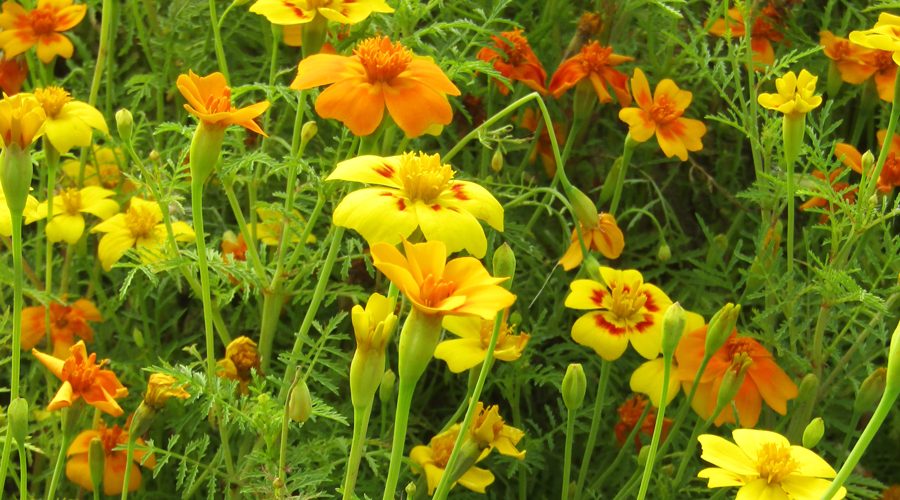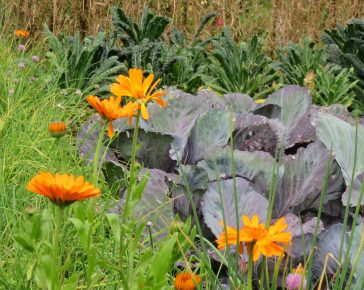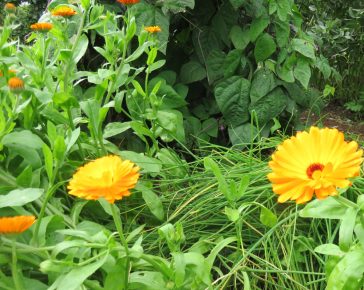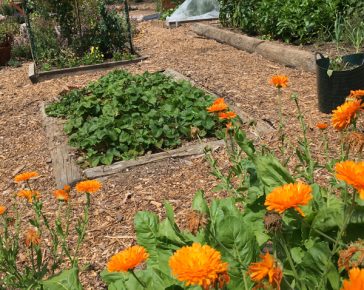If you haven’t yet explored the world of companion planting, we’d definitely recommend it for your 2020 growing. There are many benefits, not least providing food for insects…
- Attracting natural predators – for example, marigolds and tagetes can be used anywhere that aphids and and whitefly are a problem as they will attract ladybirds and lacewing which will help to keep whitefly and aphids at bay.
- Providing food for pollinators – a lot of companion plants tend to flower for a long time over the spring and summer months, and often into autumn too. They provide valuable food for pollinators for a long time, and it’s a great thing to attract more pollinators into your veg patch. More pollination = more tomatoes/beans/courgettes/squash etc etc
- Deterring pests – Strong scents can deter pests, so planting companion plants alongside vulnerable crops can help. For example, mint can help wherever you have problems with flea beetles whilst onions/chives/garlic can deter carrot fly from carrots.
- Acting as a sacrificial crop – in this instance, companion plants are planted to attract pests away from vulnerable crops. The most obvious example of this is where you would plant nasturtiums close to brassicas to attract cabbage white butterflies. In doing so, the butterflies lay their eggs on the nasturtiums, meaning that when the caterpillars hatch they eat the nasturtium leaves rather than brassica leaves.
You can use our Companion Plant packs, Edible Flowers and Herbs as companion plants – below are a few more posts that you may find interesting.




